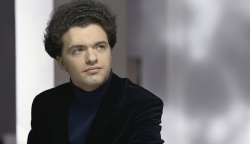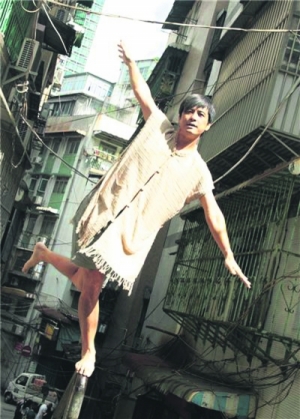 |
World-famous pianist Evgeny Kissin gave a performance in Philharmonie Luxembourg on 21st June 2018, with a programme consisting of Beethoven’s monumental Hammerklavier Sonata and a selection of Preludes by Rachmaninoff.
Kissin commenced the recital by Beethoven’s Hammerklavier Sonata, Op.106, which is notoriously known for its difficulty and length. Kissin took a relatively brisk pace, probably in an attempt of being loyal to the metronome mark by the composer. However, Kissin here seemed to be not ready when starting the piece, and the beginning of the first movement sounded rather rushed with an unsteady pace, while the majesty in the music was not captured. The second subject, in G major, was performed with a lyrical quality and nice sound projection in right hand. Despite that, the fugato section that follows did not have sufficient clarity in the delineation of voices, with occasional overpedalling. In spite of the rhythmic vitality in the playing, it was quite evident that tonal control was lacking at louder moments. The first movement was brought to an end by two powerfully projected B-flat major chords.
The atmosphere in the first theme of the second movement, marked Scherzo: Assai vivace, on the other hand, was captured successfully in the breadth of sound and dynamic contrasts, with playfulness, humour and energy. Kissin gave a dramatic and intense reading of the short section marked Presto.
The third movement, Adagio sostenuto, presented a complex combination of emotions – the deepest sorrow that could be found in piano literature, gleam of hope, woe and desolation. The emotional outpouring was addressed dramatically with monologue-like intensity. Despite some heartachingly beautiful and ethereal moments from Kissin, his playing here was musically less persuasive than the previous movements. The performance of this movement in general lacked forward momentum and propulsive energy. Sometimes, phrases were over-stretched such that the structural integrity of the music was lost at times. The stillness in the music was not treated convincingly, and the playing was somehow overly static.
The contrasts in the beginning of the fourth movement were handled effectively with a strong sense of drama. However, it was such a pity that the fp in bar 3 was ignored, in which Kissin played at f or ff throughout the brief Allegro section. Here came the gigantic fugue, marked Allegro risoluto. Marked by its hugely complex contrapuntal texture and immense technical challenges, the fugue proceeded at a rather safe tempo with a high level of technical precision, while the energy and agitation remained. Nevertheless, independent voices were sometimes blurred by the overuse of damper pedal, affecting the clarity of lines. At higher volume, the tonal control was sometimes compromised. The sonata was eventually brought to a triumphant conclusion, followed by boisterous applause from the audience.
For the second half of the programme, Kissin presented Rachmaninoff’s Prelude Op.23 No.1-7 and Op.32 No.10, 12-13, which showcased more of Kissin’s technical mastery and musical maturity. In Prelude Op.23 No.1, Lento, the introspective character and melancholy of the music was expressed, though the melody in right hand was occasionally too loud. The melodic line embedded in the middle was well projected and there was rich colouration in Kissin’s playing, coupled with sensitivity to every modulation. Kissin effortlessly tackled all the technical challenges in Op.23 No.2, Maestoso, such as the sweeping arpeggios on left hand and rapid octaves and chords. Here, the chords on right hand always sound full-bodied and resonant, yet never forceful or harsh. The pianist’s reading of this Prelude was lucid, shimmering, exuberant and full of technical brilliance, with nice dynamic shadings. A rather slow tempo was taken for No.3, Tempo di minuetto. The somewhat cautious approach was not fully convincing, but the canonic passage was executed with striking clarity and immaculately layered texture. No.4, Andante cantabile, received satisfactory projection of the melodic line with a singing tone, conveying warmth and sweetness. The changes of harmonies were handled sensitively, with a careful build-up towards the climax. The famous No.5, Alla marcia in G minor, was played at a relatively fast tempo with much technical rigour and excitement. The lyrical quality and counterpoint in the middle section was miraculously executed. There was a strong sense of melodrama and fire in his playing, but the tonal control was sometimes sacrificed in explosive moments. In No.6, Andante, the bittersweet and lush music expressed remembrance under Kissin’s hands and the left hand accompaniment also received some shaping. There was a successful creation of “bell” effects in No.7, marked Allegro, with some rapid, passionate figurations, especially in the climactic section.
Then it came to the three Preludes from Op.32. Kissin’s performance of No.10, Lento, was probably the most outstanding among the entire selection of Preludes on that night. After the grief-stricken first section, the music led to its first climax, in which the chords sound deeply sorrowful and powerful, but not forced or percussive. Kissin’s tonal control here was much more satisfactory than that in the previous Preludes and there was always clear thematic highlighting. Deeply moving with a sense of loss, reminiscence and mourning, the pianist’s reading of this Prelude reached exceptional emotional depth, digging up listeners’ personal recollections. The cadenza-like passage was executed with fluidity and flair. Technically showy, No.12 (Allegro) is a common encore piece in recitals. The technical difficulties were, of course, tackled with ease by Kissin; while the rippling emotions in the music slowly transformed into waves as the music intensified. The final Prelude, Op.32 No.13, again displayed a diversity of emotional colours – misery, struggle, hope, triumph, ecstatic joy – all condensed into a single piece of work. This Prelude, together with No.10 in the same set, were of such transcendental beauty. In fact, it was quite a unique emotional experience for listeners to journey through all these Preludes in one time.
After receiving rapturous applause from the audience, Kissin presented Prelude in C-sharp minor, Op.2 No.1 by Alexander Scriabin. Again, there were deep emotions conjured from the music, which were full of poignancy and somberness. On a technical level, the inner parts received careful voicing, with every chord well balanced. After a programme requiring such a high level of stamina, Kissin ended the recital by his own composition, Toccata, in which influence by jazz was evident. Despite the lack of a particularly memorable or catchy tune, this virtuosic piece – with rapid arpeggios and octaves, huge leaps – served perfectly as a showpiece to conclude the concert.
本網站內一切內容之版權均屬國際演藝評論家協會(香港分會)及原作者所有,未經本會及/或原作者書面同意,不得轉載。









